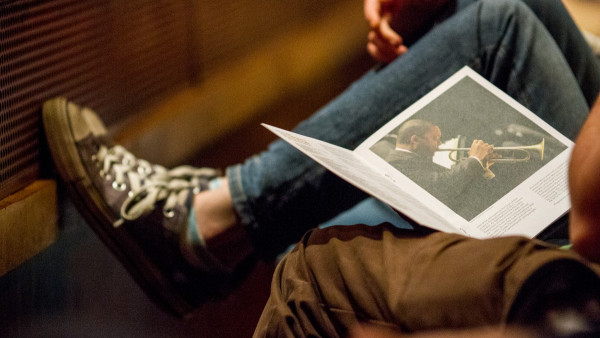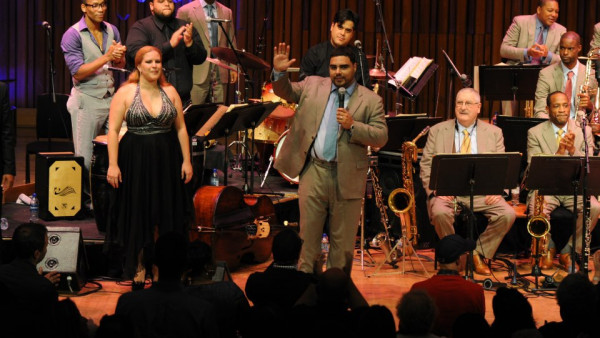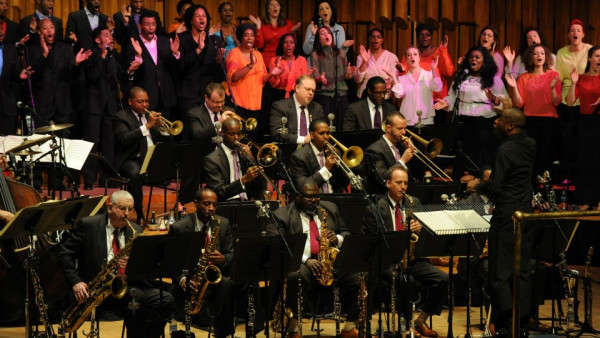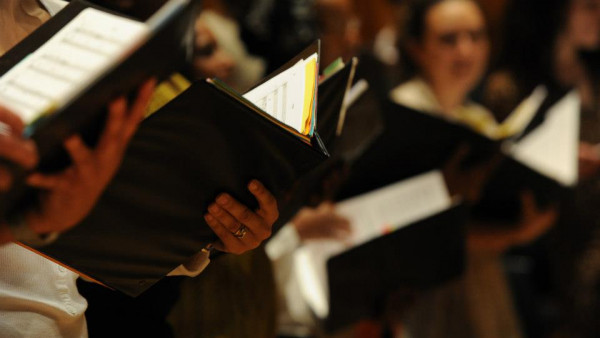Wynton on METRO UK: Jazz fusion is like Tabasco, it works in small doses
Wynton Marsalis is, very probably, the most powerful person in jazz history. Installed as artistic director of Jazz at Lincoln Center in New York, on a salary of almost $1million (£640,000), the 50-year-old trumpeter presides over an unprecedented programme of education courses, concert series, jazz orchestras and TV and radio broadcasts – all while making his own albums and touring with various ensembles.
This month he appears to be bringing a large chunk of that activity to Britain for one of his biannual visits. Alongside assorted education packages around London and a festival for school bands, Marsalis will conduct a mammoth Jazz at Lincoln Center residency at London’s Barbican and beyond with selected bands. The performances include a collaboration with an African drum troupe, a Harlem-style Abyssinian mass with a 100-voice choir, a Duke Ellington tribute, an exploration of Afro-Cuban jazz, a concert at Birmingham Symphony Hall on July 20 and the British debut of Marsalis’s epic Swing Symphony.
‘It’s a history of jazz from the plantations to the concert halls,’ says Marsalis. ‘It’s a small cross-section of what the Lincoln Center does.’
The centrepiece of this residency is his symphony for orchestra and jazz ensemble, which its conductor Simon Rattle describes as ‘a concerto for two orchestras’.
Marsalis was a teenage classical prodigy, playing trumpet concertos at the age of 14. Aged 22, he was the first musician to win Grammys in both jazz and classical categories. Does this background make it easier for him to marry the jazz and orchestral traditions?
‘It’s never easy to mix the two,’ he says. ‘Usually, with an orchestra, the string section is the rhythm section and the percussion instruments provide colour. With a jazz band, the rhythm comes from the piano, bass and drums. So when you add a jazz band to an orchestra, you take one function away from the strings. That’s a profound, fundamental difference. What’s unique here is that I’ve written the orchestra’s part so that it swings and plays inside of the jazz rhythm, rather than just playing long, sustained notes.’
Marsalis has often dismissed fusions – particularly those mixing jazz with rock and funk music – but two of these projects see him fusing jazz with Latin and African rhythms. Why are these different?
‘What I object to is the abandonment of the swing rhythm that is essential to jazz,’ he says, suddenly getting angrier. ‘There is no way that anyone can be a great jazz musician playing along to funk or rock rhythms. It just ain’t gonna happen.’
But Afro-Cuban rhythms are also outside that tradition, aren’t they? ‘They are but what Jelly Roll Morton called “The Spanish Tinge” has always been a key component of jazz. Chico O’Farrill and Dizzy Gillespie explored Cuban rhythms. I’ve always worked with salsa musicians such as Mario Rivera and the Panamanian trumpeter Victor Paz.
‘That’s where people get my views on fusion wrong. If I tell you that you can’t pour Tabasco sauce on everything in a meal without destroying some flavours, you can’t come to the conclusion that I hate Tabasco sauce! I like it on certain things. It’s the same with funk rhythms. I like them, just not on everything.’
Marsalis has certainly been broad-minded in his collaborations recently, recording albums with Eric Clapton and Willie Nelson. ‘Neither of those involved any dilution,’ he insists. ‘Eric plays in the blues tradition, he knows that tradition well. Jazz musicians have always worked with blues musicians. And Willie Nelson is from Texas, I’m from Louisiana, and we played songs we both grew up hearing and knowing. Jazz and country music have a long tradition together. Louis Armstrong collaborated with Jimmie Rodgers way back in 1930.’
It’s sometimes a little frustrating that Marsalis seems to require a historical precedent to authorise everything he does. It fits in with the idea that he treats jazz as a heritage industry rather than an evolving artform. Perhaps the most interesting project in this London residency is the one that moves into uncharted territory – the Congo Square collaboration with Ghanaian master drummer Yacub Addy – which Marsalis admits is the most problematic piece he’s worked on.
‘We worked at this for more than a year before we found something we liked,’ he says. ‘The first collaboration didn’t work and we studied it to discover why it didn’t work. The challenge is that the African band were playing a bell pattern that played four beats and six beats against each other, all the time, both at once. That’s incredibly complicated to our Western ears, so we had to work in that rhythm to make any sense of it. Like any collaboration, there’s a lot of give and take.
‘Listen, all music is a fusion. The trumpet was not invented to be played in jazz. It’s the intention behind those fusions that can be problematic. To water down your rhythm and to sacrifice your objectives to those of another culture, that is a sell-out to me. That’s different from a collaboration.’
Source: METRO UK




